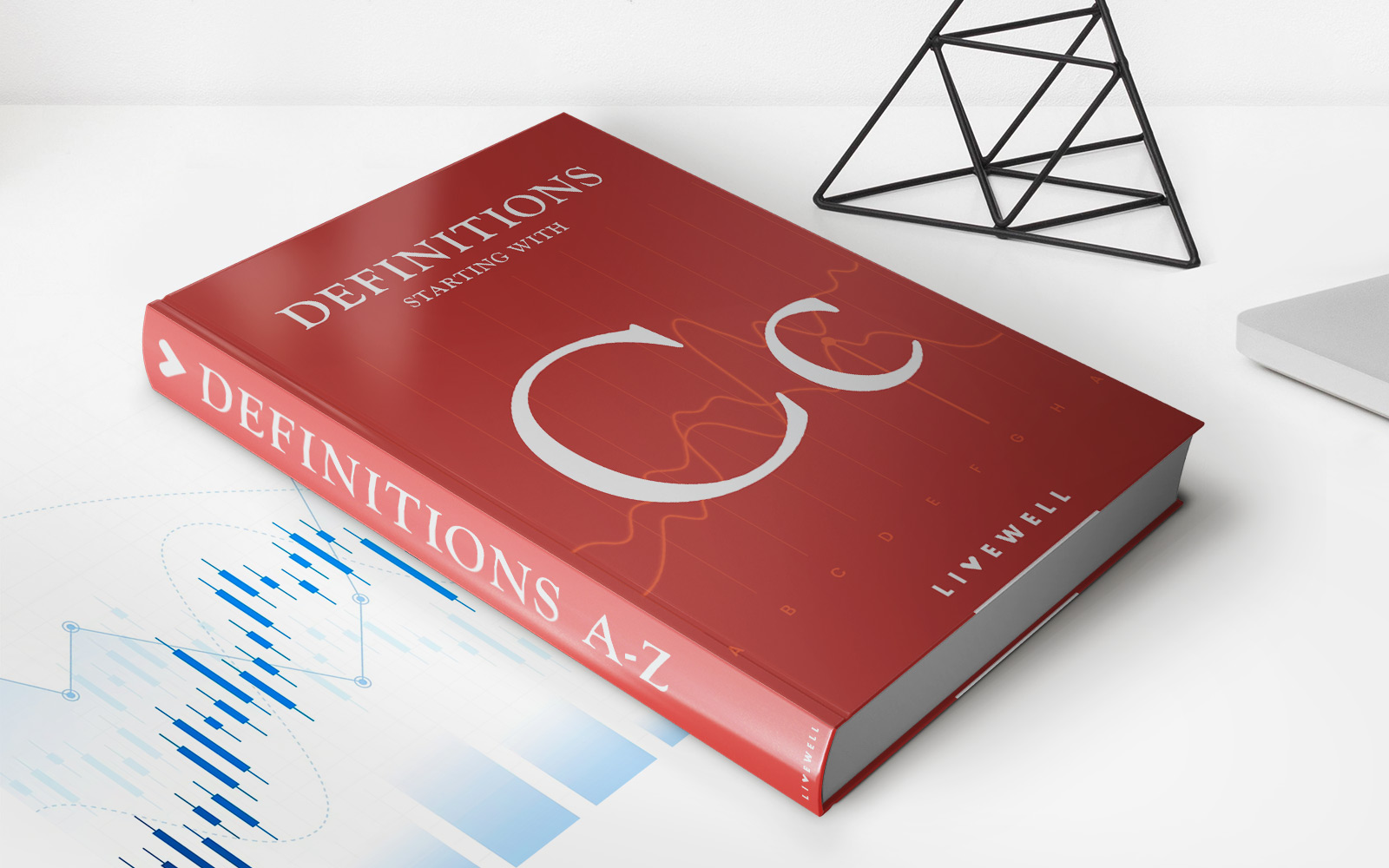

Finance
How Much Can You Borrow From Life Insurance?
Modified: February 21, 2024
Find out how much you can borrow from your life insurance policy and manage your finances effectively. Explore various options for borrowing against your life insurance.
(Many of the links in this article redirect to a specific reviewed product. Your purchase of these products through affiliate links helps to generate commission for LiveWell, at no extra cost. Learn more)
Table of Contents
- Introduction
- Understanding Life Insurance Policies
- Types of Life Insurance Policies
- Cash Value in Life Insurance Policies
- Borrowing Against a Life Insurance Policy
- Loan Limits in Life Insurance Policies
- Factors Affecting Borrowing Limits
- Interest Rates on Policy Loans
- Repaying a Policy Loan
- Consequences of Defaulting on a Policy Loan
- Alternatives to Borrowing from a Life Insurance Policy
- Conclusion
Introduction
Life insurance is a crucial financial tool that provides protection and peace of mind for individuals and their loved ones. While the primary purpose of life insurance is to provide a death benefit payout to beneficiaries upon the policyholder’s demise, many policies also offer additional benefits, such as the ability to borrow against the cash value accumulated within the policy.
Life insurance policies vary in terms of terms and conditions, coverage amounts, and payout options. Understanding the intricacies of a life insurance policy is essential for making informed decisions about borrowing against it. In this article, we will explore how much you can borrow from a life insurance policy, as well as the factors that can impact the borrowing limits.
It is important to note that not all life insurance policies allow for borrowing against the cash value. Therefore, it is crucial to review the terms of your specific policy and consult with the insurance company or an insurance professional to understand the options available to you.
By delving into the world of life insurance and borrowing against its accumulated cash value, you can make educated decisions regarding your financial needs and goals. Let’s dive deeper into the details of these policies and the borrowing limitations tied to them.
Understanding Life Insurance Policies
Before we explore the borrowing limits of life insurance policies, it’s essential to have a basic understanding of how these policies work. Life insurance is a contract between an individual (the policyholder) and an insurance company. The policyholder pays regular premiums to the insurance company, and in return, the company promises to pay out a specified sum of money to the policy’s beneficiaries upon the policyholder’s death.
Life insurance policies can be divided into two primary categories: term life insurance and permanent life insurance. Term life insurance provides coverage for a specific term, typically 10, 20, or 30 years. If the policyholder dies during the policy term, the beneficiaries receive the death benefit payout. However, if the policyholder survives the term, no payout is made.
Permanent life insurance, on the other hand, provides coverage for the policyholder’s entire life, as long as the premiums are paid. Permanent life insurance policies, such as whole life or universal life insurance, also have a cash value component. This cash value accumulates over time, based on the premiums paid and investment returns.
It’s important to note that the cash value in permanent life insurance policies differs from the death benefit. The death benefit is the amount paid out to beneficiaries upon the policyholder’s death, while the cash value represents the savings component of the policy that can be accessed during the policyholder’s lifetime.
Understanding the distinction between the death benefit and the cash value is crucial when considering borrowing against a life insurance policy. The borrowing limits are determined based on the accumulated cash value, and any outstanding loans will reduce the death benefit if not repaid during the policyholder’s lifetime.
Now that we have a general understanding of life insurance policies, let’s explore the various types of policies available and how they factor into borrowing limits.
Types of Life Insurance Policies
Life insurance policies come in different types, each with its own features and benefits. Understanding the different types of policies can help you determine which one suits your needs and plays a role in determining how much you can borrow from your policy.
1. Term Life Insurance: Term life insurance provides coverage for a specific term, typically ranging from 10 to 30 years. It offers a pure death benefit without any cash value accumulation. Since there is no cash value component, borrowing against a term life insurance policy is not possible. The policyholder pays premiums for the specified term, and if they pass away during that period, the beneficiaries receive the death benefit payout.
2. Whole Life Insurance: Whole life insurance is a type of permanent life insurance that provides coverage for the entire lifetime of the insured. It offers both a death benefit and a cash value component. The cash value grows over time through premiums and investment returns. Policyholders can potentially borrow against the cash value of a whole life insurance policy. The amount that can be borrowed is determined by the cash value accumulated in the policy.
3. Universal Life Insurance: Universal life insurance is another type of permanent life insurance that offers flexibility in terms of premium payments and death benefit amounts. It also includes a cash value component. Like whole life insurance, policyholders may be able to borrow against the cash value of a universal life insurance policy. The borrowing limits depend on the cash value available in the policy.
4. Variable Life Insurance: Variable life insurance is a type of permanent life insurance that allows policyholders to invest the cash value component in various investment options, such as stocks and bonds. The cash value fluctuates based on the performance of the investments. Policyholders may have the option to borrow against the cash value, subject to the policy’s terms and conditions.
It’s important to review the terms and conditions of your specific life insurance policy to determine if borrowing against the cash value is allowed. Additionally, the amount that can be borrowed may be subject to certain limitations, which we will explore in the following sections.
Cash Value in Life Insurance Policies
Cash value is a unique feature of permanent life insurance policies, such as whole life, universal life, and variable life insurance. It represents the savings component of the policy and accumulates over time based on the premiums paid and any investment returns.
The cash value in a life insurance policy grows tax-deferred, meaning that you do not have to pay taxes on the growth as long as it remains within the policy. This allows the cash value to potentially grow at a faster rate than if it were subject to annual taxes.
As the cash value accumulates, policyholders have the option to access these funds through withdrawals or policy loans. However, it’s important to note that accessing the cash value through withdrawals may be subject to taxes and could result in a reduction of the death benefit. On the other hand, policy loans allow you to borrow against the cash value without impacting the death benefit, as long as the loan is repaid. This makes policy loans an attractive option for those in need of financial flexibility.
The cash value serves as the collateral for policy loans, and the borrowing limits are determined based on the amount available in the policy. The cash value grows over time, and policyholders may be able to borrow a percentage of the accumulated cash value. However, it’s crucial to understand that policy loans accrue interest, which needs to be repaid along with the loan amount.
It’s important to review the terms and conditions of your specific life insurance policy to understand how cash value accumulates, the potential growth rate, and the borrowing limits tied to it. Additionally, consulting with your insurance company or a financial professional can provide further clarity on the options available to you.
Borrowing Against a Life Insurance Policy
Borrowing against a life insurance policy allows policyholders to access the cash value accumulated within their policy. This can be an attractive option for individuals who are in need of immediate funds for various purposes, such as medical expenses, college tuition, or home renovations.
The process of borrowing against a life insurance policy is relatively straightforward. Once you determine that your policy allows for loans, you can contact your insurance company or agent to initiate the loan request. The insurance company will provide you with the necessary forms and information to complete the loan application.
When applying for a policy loan, you need to specify the loan amount you wish to borrow. The borrowing limits are typically determined as a percentage of the cash value in your policy. The specific percentage may vary depending on the insurance company and the terms of your policy.
Once your loan request is approved, the insurance company will disburse the loan amount to you. It’s important to remember that the loan is not treated as additional income since you are essentially borrowing against your own cash value. Therefore, you are not required to pay taxes on the loan proceeds.
The loan amount does not have any restrictions on its use. You can utilize the funds for any purpose you deem necessary. Whether it’s paying off debts, covering medical expenses, or pursuing educational opportunities, the flexibility of a life insurance policy loan allows you to address your financial needs.
It’s important to note that policy loans accrue interest, similar to any other loan. The interest rate is determined by the insurance company and is typically lower than traditional loans offered by banks or credit unions. However, it’s crucial to review the interest rate and the terms of the loan repayment, as these factors will impact the overall cost of borrowing against your life insurance policy.
Understanding the borrowing process and its implications is essential before deciding to take out a loan against your life insurance policy. Next, we will explore the factors that can affect the borrowing limits of life insurance policies.
Loan Limits in Life Insurance Policies
When borrowing against a life insurance policy, there are certain limits imposed on the loan amount that you can access. These limits are determined by factors such as the policy’s cash value, the type of policy, and the insurance company’s guidelines. Understanding these loan limits is crucial for planning your borrowing strategy and managing your financial needs effectively.
The loan limit is typically a percentage of the cash value in your policy. The exact percentage may vary depending on the insurance company and the terms of your specific policy. Generally, policyholders can borrow up to 90% of the cash value accumulated in their life insurance policy.
For example, if your policy has a cash value of $100,000, you may be able to borrow up to $90,000 against it. The loan amount is not guaranteed to reach the maximum limit, as it depends on your specific financial situation and needs. You can choose to borrow a percentage of the cash value less than the maximum limit, depending on how much you require and your ability to repay the loan.
It’s important to consider the impact of borrowing against your life insurance policy on the death benefit. The death benefit is the amount that will be paid out to your beneficiaries upon your death. Any outstanding loans, including accrued interest, will be deducted from the death benefit if they are not repaid during your lifetime. Therefore, it’s essential to have a clear understanding of the loan terms and repayment plan to ensure the long-term financial stability for your loved ones.
Loan limits may also vary depending on the type of life insurance policy you have. Whole life insurance and universal life insurance policies generally offer more flexibility for borrowing against the cash value compared to term life insurance policies. Additionally, some insurance companies may have specific guidelines or restrictions in place for policy loans, so it’s crucial to review your policy documents or consult with your insurance provider to understand the borrowing limits for your specific policy.
By understanding the loan limits of your life insurance policy, you can make informed decisions about the loan amount to borrow and how it aligns with your financial goals and needs. It’s important to consider the potential impact on the death benefit and ensure that borrowing against your policy is a prudent financial decision.
Factors Affecting Borrowing Limits
The borrowing limits on a life insurance policy are influenced by various factors. Understanding these factors is crucial for determining how much you can borrow against your policy. Here are the key factors that can impact the borrowing limits:
1. Cash Value: The primary factor that determines the borrowing limit is the cash value accumulated in your life insurance policy. The higher the cash value, the greater the potential borrowing limit. As you continue to pay premiums and the cash value grows, your borrowing limit may increase over time.
2. Type of Policy: The type of life insurance policy you have can also affect the borrowing limits. Whole life insurance and universal life insurance policies often offer higher borrowing limits compared to term life insurance policies. This is because permanent life insurance policies typically have a cash value component that grows over time.
3. Age and Health: Your age and health at the time of borrowing can impact the borrowing limits as well. Insurance companies assess the risk associated with the loan and may adjust the limits based on your age and health condition. Older policyholders or those with serious health issues may have lower borrowing limits compared to younger and healthier individuals.
4. Loan Repayment History: Your repayment history on previous loans from the policy can also play a role in determining your borrowing limits. If you have a track record of repaying loans on time, insurance companies may be more willing to extend higher borrowing limits. On the other hand, a poor repayment history may result in lower borrowing limits or restricted access to policy loans.
5. Insurance Company Guidelines: Each insurance company sets its own guidelines for borrowing against life insurance policies. These guidelines can vary, and some insurance companies may have stricter limits or additional requirements in place. It’s crucial to review your policy documents and consult with your insurance provider to understand the borrowing limits specific to your policy.
It’s important to remember that the borrowing limits are not fixed and can change over time. As the cash value in your policy grows and you fulfill the requirements set by the insurance company, you may be able to request an increase in your borrowing limit. Additionally, if you have made partial repayments on previous loans, your available borrowing limit may also increase accordingly.
By considering these factors and understanding how they impact borrowing limits, you can effectively plan your borrowing strategy and make informed decisions about accessing the cash value in your life insurance policy.
Interest Rates on Policy Loans
When borrowing against a life insurance policy, it’s important to understand the interest rates associated with policy loans. Policy loan interest rates can vary depending on the insurance company and the terms of your specific policy. Here are some key points to consider regarding interest rates on policy loans:
1. Fixed or Variable Rates: Policy loans can have either fixed or variable interest rates. Fixed rates remain constant throughout the loan term, providing predictability in terms of repayment amounts. Variable rates, on the other hand, can fluctuate over time based on market conditions or other factors. It’s essential to review your policy documents or consult with your insurance provider to determine the type of interest rate on your policy loan.
2. Competitive Rates: Policy loan interest rates are often competitive compared to other forms of borrowing, such as conventional bank loans or credit card debt. Insurance companies recognize that policy loans utilize the cash value of the policy as collateral, reducing the risk involved. As a result, policy loan interest rates are generally lower than other borrowing options available in the market.
3. Determining Factors: The specific factors that influence the interest rate on a policy loan can vary between insurance companies. However, common determinants include the insurance company’s policies, prevailing market rates, the policyholder’s age, health status, and repayment history. Insurance companies may also consider the overall financial strength of the policy and its potential for growth when determining the interest rate.
4. Tax Implications: One advantage of policy loans is that the interest you pay is typically not tax-deductible. However, when the policy is surrendered or the insured passes away without repaying the loan, the outstanding loan balance plus accrued interest will be deducted from the death benefit payout. It’s important to consult with a tax professional or financial advisor to understand the specific tax implications based on your policy and jurisdiction.
5. Repayment Flexibility: Policy loans often provide flexibility in terms of repayment. You can choose to repay the loan and interest according to the schedule set by the insurance company, or you may have the option to pay off the loan in a lump sum. Some policies also allow partial loan repayments, which can help reduce the interest charges over time.
It’s crucial to carefully assess the interest rate on a policy loan and its impact on your overall financial situation. While policy loan interest rates are generally lower than other borrowing options, it’s important to factor in the long-term implications on the death benefit and the potential growth of the policy’s cash value. By understanding the interest rate and repayment terms, you can make informed decisions about borrowing against your life insurance policy.
Repaying a Policy Loan
Repaying a policy loan is a critical aspect of utilizing the cash value in your life insurance policy. Understanding the repayment process and options available to you ensures that you manage your loan effectively and maintain the financial stability of your policy. Here are some key points to consider when repaying a policy loan:
1. Structured Repayment Schedule: When you take out a policy loan, the insurance company will provide a structured repayment schedule. This schedule outlines the periodic repayment amounts, including both principal and interest portions, and the duration of the repayment period. It’s important to adhere to this schedule to avoid any negative consequences, such as defaulting on the loan or reducing the death benefit.
2. Automatic Premium Deduction: In some cases, insurance companies provide the option to have your loan repayments automatically deducted from the premiums you pay on your policy. This method simplifies the repayment process by ensuring that loan payments are consistently made alongside your premium payments. It helps prevent missed payments and ensures that your loan is repaid on time.
3. Lump Sum Repayment: If you have the financial means to do so, you may have the option to repay the policy loan in one lump sum. By repaying the loan in full, you can save on future interest charges and potentially restore the cash value to its previous level. However, it’s crucial to consider the impact of using a significant amount of funds to repay the loan and assess other financial obligations you may have.
4. Partial Repayments: Some insurance policies allow for partial loan repayments. This means that you can choose to repay a portion of the loan amount without fully paying off the entire balance. Making partial repayments can help reduce the interest charges over time and gradually decrease the outstanding loan balance. Review your policy documents or consult with your insurance provider to determine if partial repayments are an option for your specific policy.
5. Loan Interest: Keep in mind that the policy loan accrues interest, which is typically outlined in the loan agreement. Failing to repay the loan and interest in a timely manner can lead to the accumulation of additional interest charges, potentially affecting the growth of your cash value and the death benefit. It’s important to manage your loan repayments diligently to minimize the overall cost of borrowing.
6. Impact on Death Benefit: It’s crucial to understand that any outstanding policy loans, including accrued interest, will be deducted from the death benefit if they are not repaid during the policyholder’s lifetime. Failing to repay the loan can result in a reduced death benefit for your beneficiaries. Consider the long-term impact on your loved ones and plan your loan repayments accordingly.
Understanding the repayment options and fulfilling your obligations is essential for effectively managing a policy loan. By staying on top of your repayments and considering the potential impact on the death benefit, you can ensure that your policy remains intact and provides the intended financial protection to your beneficiaries.
Consequences of Defaulting on a Policy Loan
Defaulting on a policy loan can have significant consequences on your life insurance policy and your overall financial situation. It’s important to understand the potential repercussions of failing to repay a policy loan to avoid any negative outcomes. Here are some consequences of defaulting on a policy loan:
1. Reduction in Death Benefit: When you take out a policy loan, the loan amount along with any accrued interest becomes a liability against the cash value of your policy. If you fail to repay the loan, the outstanding balance will be deducted from the death benefit payable to your beneficiaries. This means that the amount your loved ones receive upon your passing will be reduced by the unpaid loan balance, potentially impacting their financial security.
2. Decreased Cash Value: Failing to repay a policy loan will also result in a decrease in the cash value accumulated in your policy. The unpaid loan balance, including accrued interest, will remain outstanding and will continue to accrue interest over time. This can erode the growth of your cash value and reduce the funds available within the policy for future borrowing or other purposes.
3. Potential Tax Liability: Defaulting on a policy loan can lead to tax consequences. If your policy lapses or is surrendered with an outstanding loan balance, the amount of the loan, including any unpaid interest, may be considered taxable income. This means that you could be required to include the loan amount as part of your income for tax purposes, potentially resulting in additional tax liabilities.
4. Negative Credit Impact: Defaulting on any type of loan, including a policy loan, can have a negative impact on your credit history and credit score. If you fail to repay the loan as agreed, it may be reported to credit bureaus, leading to a decrease in your credit score. This can make it more challenging to access credit in the future and could affect your overall financial standing.
5. Policy Termination: In some cases, if a policy loan remains unpaid for an extended period, the insurance company may terminate the policy. The termination of the policy means you will lose the life insurance coverage and any remaining cash value in the policy. This can have severe implications, especially if you still have dependents who rely on the financial protection provided by the policy.
To avoid these consequences, it’s important to diligently manage your policy loan and make regular repayments according to the agreed-upon schedule. If you are facing financial difficulties and are unable to make the loan repayments, it’s advisable to communicate with your insurance company. They may be able to provide alternative solutions, such as modifying the repayment schedule or adjusting the loan terms, to help you meet your financial obligations.
Overall, defaulting on a policy loan can have long-lasting effects on your life insurance policy and your financial well-being. It’s essential to prioritize loan repayments and consider the potential consequences before utilizing the cash value of your policy.
Alternatives to Borrowing from a Life Insurance Policy
While borrowing from a life insurance policy can be an attractive option for accessing funds, it’s important to explore alternative avenues before making a decision. Here are some alternatives to consider instead of borrowing from your life insurance policy:
1. Emergency Fund: Building and maintaining an emergency fund is crucial to handle unexpected expenses without relying on loans. Strive to set aside a portion of your income in a separate savings account dedicated to emergencies. Having an emergency fund can provide peace of mind and help you avoid the need to borrow against your life insurance policy.
2. Personal Savings: If you have personal savings or investments, consider utilizing those funds before resorting to a policy loan. This allows you to avoid borrowing altogether and prevents any impact on your life insurance policy. Review your savings and investment accounts to determine if they can be used to cover your financial needs.
3. Traditional Loans: Depending on your creditworthiness and financial situation, traditional loans from banks or credit unions may offer competitive interest rates and repayment terms. Explore options such as personal loans, home equity loans, or credit cards with lower interest rates to meet your immediate financial needs.
4. Borrowing from Retirement Accounts: If you have a retirement savings account, such as a 401(k) or IRA, you may have the option to borrow against those funds. While this should be a last resort, borrowing from retirement accounts can help you avoid the potential impact on your life insurance policy and provide access to funds for pressing financial matters.
5. Negotiating Payment Plans: If you are facing a temporary financial hardship, consider reaching out to creditors or service providers to negotiate payment plans. Many companies are willing to work with individuals who are in genuine need and may offer flexible payment options to help you manage your financial obligations without resorting to borrowing.
6. Government Assistance Programs: Depending on your circumstances, you may be eligible for various government assistance programs that can provide financial support during times of need. Research and explore programs in your country or region that can help alleviate financial burdens and provide the necessary assistance.
Consider these alternatives and evaluate which option best aligns with your financial goals and needs. It’s important to weigh the costs, interest rates, and potential impact on your assets before making a decision. Consulting with a financial advisor can also provide valuable insights and guidance tailored to your specific situation.
By considering these alternatives and exploring all available options, you can make an informed decision that aligns with your financial objectives while preserving the integrity of your life insurance policy.
Conclusion
Understanding the borrowing limits and options associated with a life insurance policy is essential for making informed financial decisions. While life insurance policies can offer the opportunity to borrow against the accumulated cash value, it’s important to weigh the advantages and implications before moving forward.
By grasping the dynamics of life insurance policies, including the cash value and different types of policies available, individuals can assess their borrowing needs and capabilities. Factors such as age, health, and the insurance company’s guidelines may influence borrowing limits, so it’s important to review policy terms and consult with professionals when necessary.
Repaying a policy loan is crucial to maintain the financial stability of the policy and prevent negative consequences. Adhering to the structured repayment schedule, considering automatic premium deductions, and exploring lump sum or partial repayments are strategies to effectively manage and repay a policy loan.
It’s important to consider alternatives to borrowing from a life insurance policy. Building an emergency fund, utilizing personal savings, exploring traditional loans, negotiating payment plans, and accessing government assistance programs are viable options that can help meet financial needs without impacting the policy or incurring additional costs.
In conclusion, borrowing from a life insurance policy can provide financial flexibility, but it requires careful consideration of the borrowing limits, interest rates, and potential impact on the death benefit. By understanding the policy terms and exploring alternative options, individuals can make wise decisions that align with their financial goals while keeping the long-term integrity and benefits of their life insurance policy intact.














